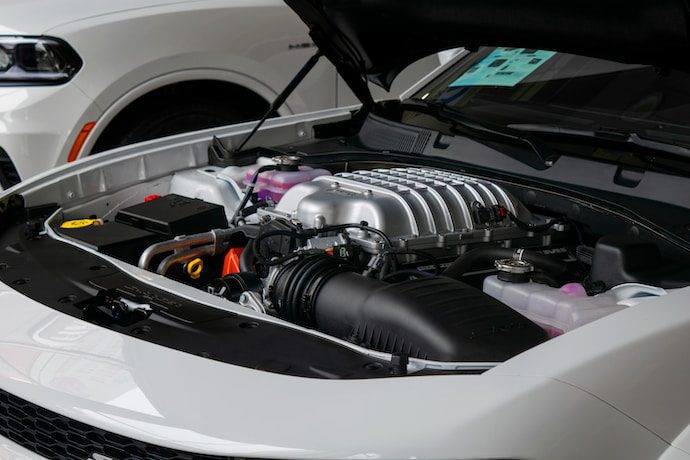
Guide for Reviving a Dead Motorcycle Battery
Your motorcycle battery just died, and you cannot afford to buy a new one yet. The only option is to revive it, but you do not know how it is done. Read on to discover how to revive a dead bike battery and ensure your next battery doesn’t die prematurely.
The concept of battery revival has been a lifesaver for many motorcycle owners. If you were racking your brain on what to do about your dead battery when you are low on cash, this is no doubt a welcome option.
You can revive a lead acid battery by draining the electrolyte (sulphuric acid) and replacing it with an Epsom salt solution. It doesn’t bring the battery back to 100% performance but you can count on at least 80% performance for a couple of months or even a year.
A dead motorcycle battery which doesn’t take charge is most likely as a result of sulfation. This is the number one cause of early failure in lead-acid batteries. It happens when the sulphuric acid starts breaking down. As this happens, sulfur crystals form and stick to the lead plates. The result is lead sulfate crystals on the plates.
As the process continues, the crystals grow in size and harden. If nothing is done, they can cover the lead plates completely, drastically reducing the battery’s ability to generate electric current.
When the battery dies, it is possible to revive it by creating a new electrolyte and recharging it.
Can You Revive a Dead Motorcycle Battery
The possibility of reviving a dead motorcycle battery depends on various factors. A dead battery can occur due to prolonged inactivity, extreme weather conditions, or the natural aging process.
However, there are techniques commonly employed to attempt battery revival. The first step involves ensuring proper safety measures, such as working in a well-ventilated area and wearing protective gear.
Then, the battery terminals must be cleaned to remove any corrosion or buildup.
Using a voltmeter, the voltage of the battery should be checked to determine if it is completely dead or if it still holds some residual charge.
If the battery shows no charge, a battery charger can be utilized to attempt a jump-start. Following the manufacturer’s instructions for the specific charger being used is crucial.
After connecting the charger to the battery, it should be left to charge for a sufficient time, usually a few hours, until the voltage reaches a suitable level.
If the battery remains unresponsive after attempting a charge, it may indicate irreversible damage, requiring a replacement.
How to Revive a Dead Motorcycle Battery
A dead motorcycle battery can be revived by draining the sulphuric acid and replacing it with another electrolyte. Let’s look at how to revive a battery using an Epsom salt solution.
What you will need:
- Epsom salt
- Distilled water
- Crescent wrench
- Small plastic funnel
For safety purposes:
- A pair of goggles
- A pair of gloves
Step 1. Precautionary Measures
If you have just got off your bike then take a few minutes to let the battery cool.
The electrolyte in the battery is sulphuric acid which is very corrosive. Be sure to protect yourself by wearing gloves and a pair of goggles. Choose a well ventilated area to work
Step 2. Remove the battery
Use a crescent wrench to loosen the connectors. Lift the battery out and set it aside.
Step 3: Drain the acid
Carefully lower the battery to pour the acid from each cell into a plastic container. Be sure to lower it away from your body to minimize chances of acid accidents
Step 4. Prepare the Epsom solution
Dissolve 8 ounces of Epsom salt into a quart of distilled water. To make it dissolve faster, you can heat up the water to about 130 degrees Fahrenheit. Once all the salt is dissolved, let it cool. After that, fill each cell with the solution using a small plastic funnel to ensure no solution goes to waste.
Replace the caps and give the battery a light shake to distribute the solution evenly.
Step 5. Charge the battery
Place the battery on a slow charger. First, connect the charger to the battery terminals before switching it on at the power outlet.
Allow it to charge overnight or until the charger indicator shows full charge. Once it is fully charged, reinstall it.
Tips on Reviving Motorcycle Batteries
Here is some advice on the process.
- Always use distilled water and never tap water. Distilled water makes it easier to dissolve the salt. Tap water also has chemicals that could gradually damage the battery.
- Don’t use a car battery charger. Use a 6-volt trickle or a smart charger with a slow-charge option. A car charger channels more current than the small motorcycle battery can handle so it could easily damage it permanently.
- Make sure the battery caps are off during charging. This allows any gases produced to be expelled easily.
- Dispose of sulphuric acid appropriately. This corrosive acid can be extremely dangerous if improperly disposed of. This is not something you want to leave lying around in your garage to be dealt with later.
Reviving a lead acid battery gives it a new life. It works almost as well as new for a while. It should only be done as a stop-gap measure to buy you some time before buying a new battery.
Why Batteries Fail Prematurely
Lead acid batteries generally last between 3 and 5 years. This means it will eventually fail no matter what you do. However, some motorcycle batteries last way longer than others. These are some reasons behind premature failure.
Battery Overload
Installing many accessories shortens the lifespan of a battery. Check the owner’s manual to find out the battery’s voltage and compare this to the engine’s demands and basic electrical components. Chances are there is little power left over. Don’t install anything which will put unnecessary strain on the battery.
Poor Ground Connection
If the ground connection between the battery and the frame is poor, it could hamper the charging of the battery. If the battery is not fully charged, it will likely fail prematurely.
Make a point to check all the connections to ensure everything is as it should be. Use a piece of sandpaper to remove dirt and corrosion from the connectors if necessary.
Parasitic Leak
It is common to find abnormal power leaks from the battery towards certain appliances. It could be a high beam light, GPS, alarm, or other electrical component. Leaks could drain the battery dry, reducing its life expectancy.
Remove the negative battery cable to confirm if you have a parasitic leak somewhere. Place a volt-ohm meter lead between the battery’s negative terminal and cable. Read the current draw. Ideally, it should read zero, and this confirms that there is no leak.
An insignificantly low reading can be ignored. If you get a reading of one amp or more, there will likely be a leak somewhere. It is time to do some investigation to find out where it is.
Faulty Alternator
The alternator’s job is to charge the battery after power is supplied to start the motorcycle engine. A faulty alternator leaves a drained battery uncharged so it cannot meet the starter demands.
This is a common problem in high-mileage motorcycles. Remember that the alternators fitted in motorcycles during manufacture don’t last very long so it should not be a big surprise when they fail.
Conclusion
Now you know how to revive a dead motorcycle battery. It helps to buy you a couple of months. It should not be considered a permanent solution. Once you have revived it, plan to buy a new battery as soon as possible.
When you do, try not to overload it with appliances, as this reduces its lifespan. Check the ground connections regularly and watch the alternator, especially if you have had the bike for a few years.
It is bound to fail soon. Lastly, always have a multimeter handy if you suspect a parasitic leak. These leaks can dry your battery and send you back to the shop for a new battery sooner than you hoped.
